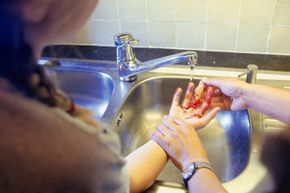Anybody who's ever gotten a skin care lecture from a spa technician or read a fashion magazine article on beauty tips knows that using moisturizer to replace skin-sealing lipids and preserve your skin's water content is absolutely essential to maintaining healthy-looking skin. "Given the assaults that our skin undergoes during the day -- weather, pollution, dry indoor environments, dirt, rubbing and poking -- all women past the age of about 30 should use some kind of moisturizer, in the morning and at night," proclaims Daniel B. Yarosh, author of "The New Science of Perfect Skin: Understanding Skin-Care Myths and Miracles for Radiant Skin at Any Age" [source: Yarosh].
But that advice leaves you to wonder: What about an even worse assault on your skin -- like having it ripped open, torn or punctured? If moisturizer is such a good remedy for other types of damage to the epidermis, the body's outermost layer, then wouldn't it heal cuts and scrapes, too? The next time you get a skin injury, shouldn't you slather it with your regular moisturizer?
Advertisement
The answer to those questions is: "Well, yes and no." It's true that keeping cut skin moist and elastic is critical for healing and helps to prevent a temporary boo-boo from turning into an unsightly permanent scar. That said, an open wound -- and face it, that's what a cut is -- is more fragile and prone to irritation and infection than normal, unbroken skin that's just a little dry, itchy or scaly. You need to moisturize a cut more carefully, and that means using a different moisturizer and a special healing regimen apart from your usual skin care routine. What's the regimen?


